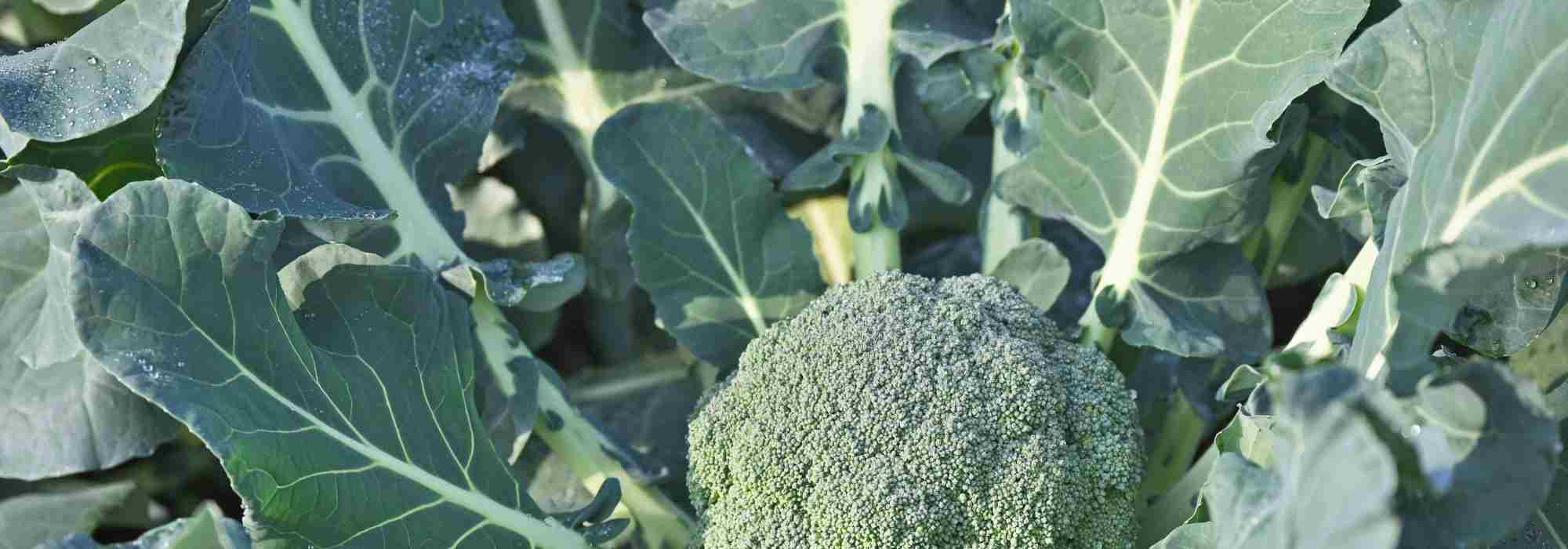
How to choose the best broccoli variety for the vegetable garden?
Our tips for choosing broccoli based on different criteria
Contents
The broccoli (Brassica oleracea var. italica), king of the Brassicaceae, is a demanding yet rewarding vegetable to grow. Valued for its nutritional qualities and culinary versatility, it deserves a prime spot in the kitchen garden. Grown for its flower head, broccoli requires considerable space and consistent moisture. This is why choosing the variety best suited to your garden’s growing conditions is crucial. Not all broccolis are equal, and behind their apparent similarity lies an astonishing diversity that can make all the difference depending on your climate or growing goals.
Discover our selection of the best broccolis to grow in the kitchen garden based on climatic, cultural or aesthetic criteria.
Broccoli, a complex vegetable
Before discussing the best broccoli varieties to choose according to your criteria, it might be wise to learn about the different types of broccoli you can grow. Broccoli is indeed divided into three categories which themselves constitute selection criteria:
- Calabrese broccoli: this is the most common type, easily found in shops. It produces a large, dense central head, dark green to blue-green in colour. It is often harvested before the smaller secondary heads develop. The most traditional being the ‘Green Calabrese’, but many hybridizations have created new varieties such as ‘Marathon F1’ or ‘Verdia F1’
- The sprouting broccoli or side-shoot broccoli: much less known than Calabrese broccoli, as it is less common in markets, this broccoli produces a smaller main head, followed by numerous small fleshy florets that can be eaten like asparagus
- The Romanesco broccoli : sometimes classified as broccoli, sometimes as cauliflower, this cabbage fascinates with its fractal spirals. It is ideal for gardeners seeking originality, but requires specific growing conditions.
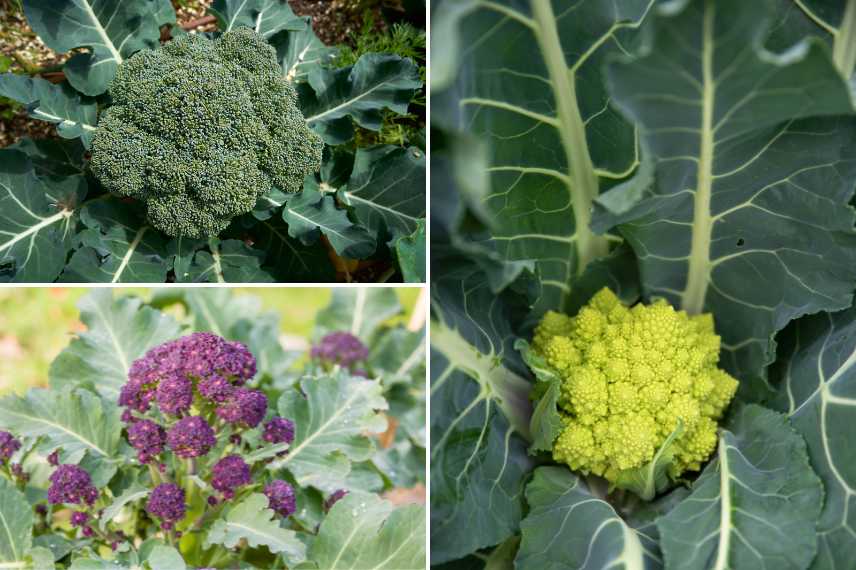
Three types of broccoli: Calabrese, sprouting and Romanesco
Depending on the climate
Broccoli is a vegetable that thrives in rich, cool and moist soil. Its cultivation varies greatly depending on the climate. Choosing the right variety for your climate zone is essential to avoid premature running to seed, growth issues or more frequent parasitic attacks in hot climates.
Here is an overview of recommendations according to the climate:
- In temperate regions, with moderate summers and mild winters (oceanic zones, Brittany, northern France), you have the luxury of being able to grow almost all varieties. Broccoli thrives here, particularly in spring and autumn. Calabrese varieties as well as sprouting types or romanesco grow here without difficulty. Sowing can be done in February-March under cover for a harvest from May to June. Sowing can also take place from May to July for an autumn harvest, between September and October.
- In warm and Mediterranean climates (coastal areas, Occitanie, south-east), broccoli is more temperamental to grow. High temperatures and lack of moisture can trigger premature running to seed and poorly formed heads. Therefore, aim for cultivation in late winter or very early spring, before the heat arrives. In these regions, it is necessary to opt for early varieties such as ‘Early Purple Sprouting’ or ‘Santee Purple’ among sprouting broccoli, or the early romanesco cauliflower. Among Calabrese broccoli, the varieties ‘Atlantis F1’ and ‘Fiesta F1’ are particularly resistant to heat and running to seed, with ‘Fiesta’ also benefiting from rapid growth.
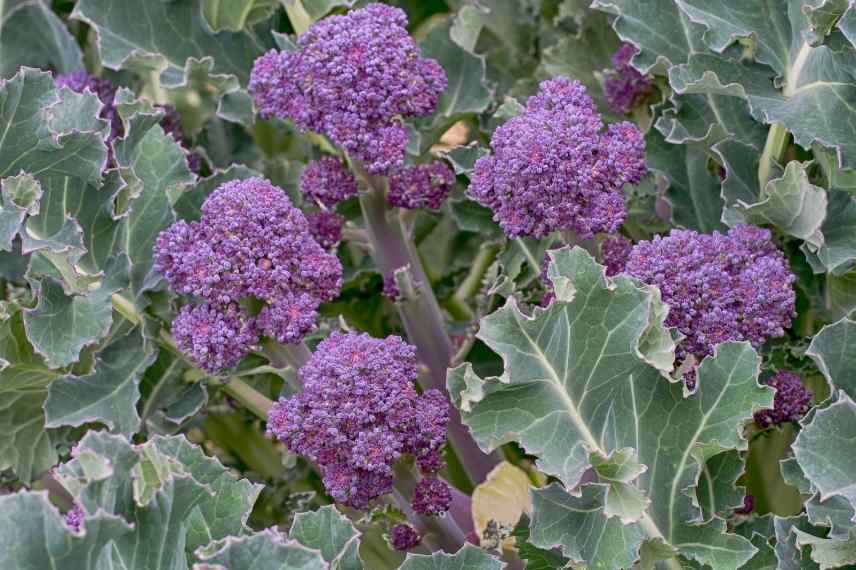
The ‘Early Purple Sprouting’
- In continental and montane climates (Eastern France, Massif Central), the main challenge is managing late spring and early autumn frosts. Therefore, either accelerate the growth cycle to avoid these critical periods or grow varieties capable of withstanding the cold. The choice will focus on semi-early to early varieties such as ‘Marathon F1’ or hardier sprouting broccoli like ‘Early Purple Sprouting’ or ‘Spiridon F1’.
Depending on the colour of the heads
The colour of broccoli isn’t just about style in the vegetable garden: it also affects visual appeal in the kitchen. A great way to impress your family or guests! Broccoli heads mainly come in three shades:
- Dark green to blue-green, the most classic colour: this is the standard colour of Calabrese broccoli, with dense heads and a mild flavour. ‘Marathon F1’ and ‘Green Magic F1’ offer a blue-green head, ‘Ramoso Calabrese’ small dark green florets, just like ‘Belstar F1’ with its very compact heads, renowned for their taste. As for ‘Sessantina’, it’s a sprouting variety with a lovely green hue.
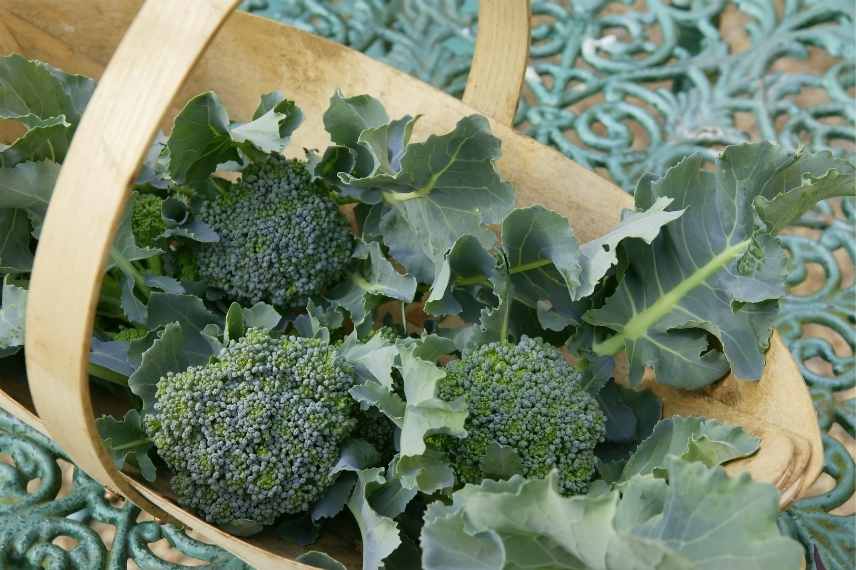
The ‘Ramoso Calabrese’ variety
- Purple, more unusual: purple broccoli are often sprouting varieties harvested in late winter, as they are very cold-resistant. Notable examples include the essential ‘Early Purple Sprouting’ or ‘Summer People’, better suited to summer crops. However, the purple colour of Calabrese broccoli ‘Red Arrow’ doesn’t last through cooking.
- Apple green to yellow-green: this is a typical colour of Romanesco
Depending on the growing season
Broccoli is a cool-season vegetable, but depending on the variety chosen and your local climate, you can grow it at different times of the year. Good timing not only optimises growth and yield, but also helps prevent issues like bolting, pests, or water stress.
Here’s how to choose your variety according to the growing season.
For a spring harvest
Sow under cover from January-February, and transplant the seedlings in March if the soil is warmed. The goal is to harvest early, typically between April and June, before summer heat arrives. Choose early and vigorous varieties.
- ‘Green Magic F1’ : fast-growing, large heads
- ‘Premium Crop F1’ : fast growth and heat-tolerant, harvest 55 days after sowing
- ‘Lord F1’ : fast-growing, ready for harvest 55 days after sowing
For a summer harvest
Growing broccoli in summer is trickier as it dislikes heat. Provide good shade and choose early varieties with a short cycle of 55-60 days. Summer cultivation is best suited to cooler regions.
For an autumn harvest
For beautiful heads in September, sow in June or July and transplant in August. Choose late varieties that appreciate autumn coolness, such as ‘Marathon F1’. Romanesco broccoli is also ideal for autumn cultivation: sow from mid-May to late June for harvest from October.
The variety ‘Ramoso‘ is relatively early but harvested from September to December. Sow from May to August.

Romanesco broccoli, between broccoli and cauliflower
For a winter harvest
For winter harvest, you must choose varieties that will overwinter in the vegetable garden for a very early harvest in late winter. Sow these broccolis in July-August and transplant in September. Select hardy, long-cycle varieties, usually with side shoots.
We recommend varieties like ‘Early Purple Sprouting’ and ‘Santee F1’.
Following the harvest objectives
Broccoli can adapt to different growing styles depending on what you expect from it: either a massive and punctate harvest, or regular harvests over several weeks. The choice of variety is therefore crucial depending on your goal.
- For a single, but dense harvest: this involves growing varieties that form a beautiful, compact main head in one cut, for high yield. Recommended varieties are ‘Marathon F1’, ‘Belstar F’ and ‘Green Magic F1’.
- For a prolonged and staggered harvest of secondary shoots after harvesting the main head. The harvest thus spreads over several weeks. In this case, you’ll rather grow varieties with lateral shoots like ‘Early Purple Sprouting’ or ‘Santee F1’.
- Subscribe!
- Contents
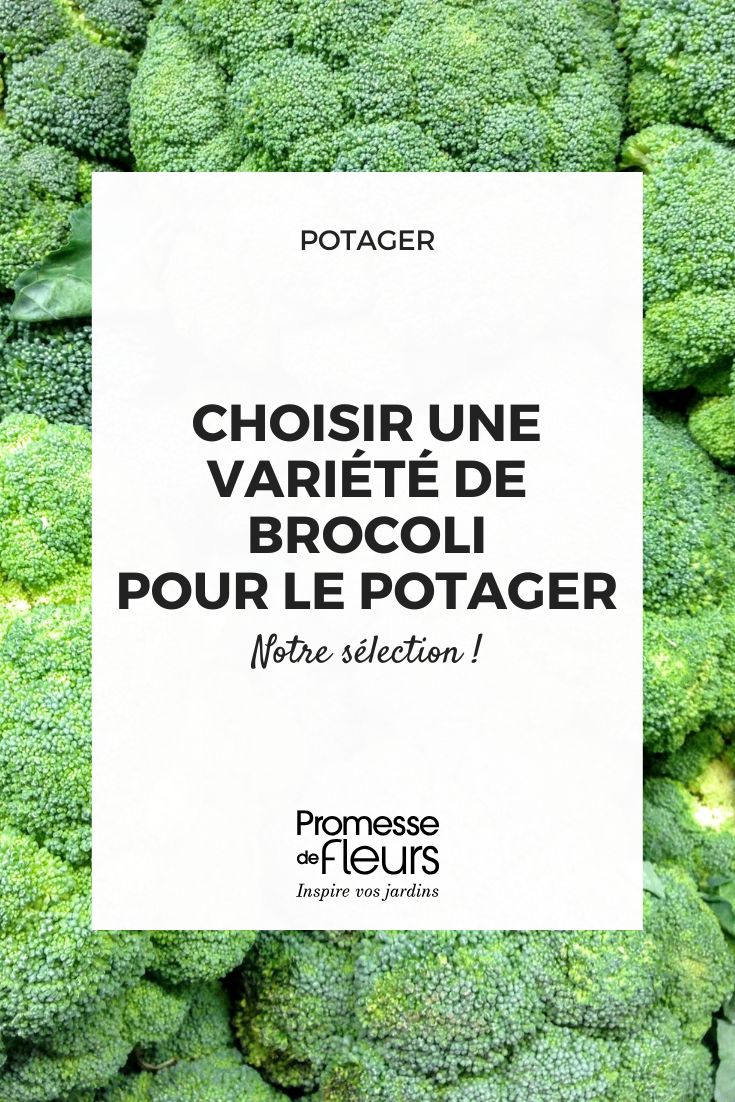































Comments